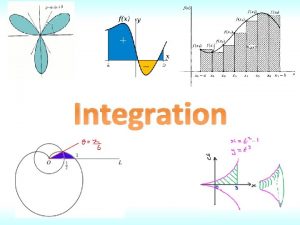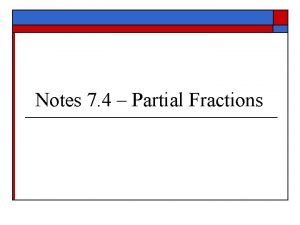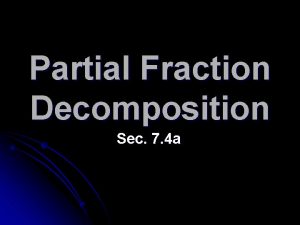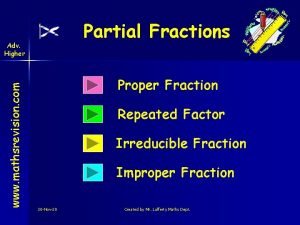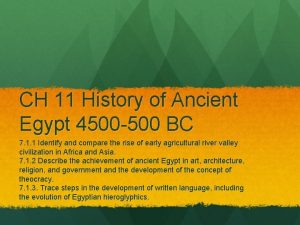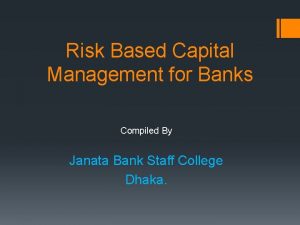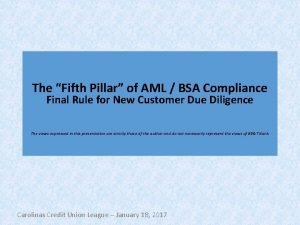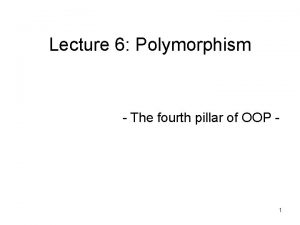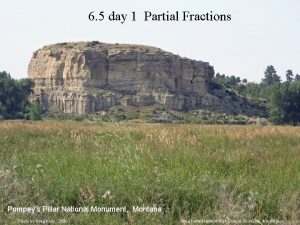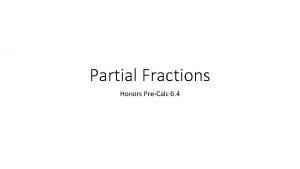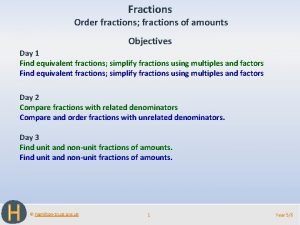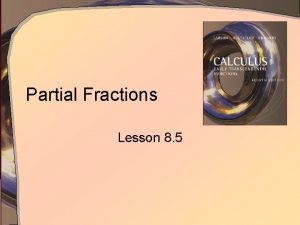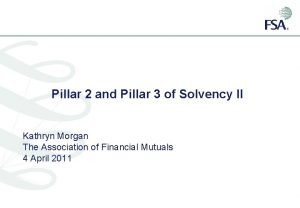6 5 day 1 Partial Fractions Pompeys Pillar














- Slides: 14

6. 5 day 1 Partial Fractions Pompey’s Pillar National Monument, Montana Photo by Greg Kelly, 2009 Greg Kelly, Hanford High School, Richland, Washington

Signed by William Clark on July 25, 1806 when returning east on the Lewis & Clark Expedition. Photo by Greg Kelly, 2009 Greg Kelly, Hanford High School, Richland, Washington

This would be a lot easier if we could re-write it as two separate terms. These are called nonrepeating linear factors. You may already know a short-cut for this type of problem. We will get to that in a few minutes.

This would be a lot easier if we could re-write it as two separate terms. Multiply by the common denominator. Set like-terms equal to each other. Solve two equations with two unknowns.

This is called Solvetechnique two equations with Fractions two. Partial unknowns.

The short-cut for this type of problem is called the Heaviside Method, after English engineer Oliver Heaviside, 1850 -1925. Multiply by the common denominator. Let x = - 1 Let x = 3

The short-cut for this type of problem is called the Heaviside Method, after English engineer Oliver Heaviside, 1850 -1925.

Good News! The AP Exam only requires non-repeating linear factors! The more complicated methods of partial fractions are good to know, and you might see them in college, but they will not be on the AP exam or on my exam.

2 Repeated roots: we must use two terms for partial fractions.

4 If the degree of the numerator is higher than the degree of the denominator, use long division first. (from example one)

A challenging example: irreducible quadratic factor first degree numerator repeated root



We can do this problem on the TI-nspire: expand ((-2 x+4)/((x^2+1). (x-1)^2)) menu 3 3 Algebra Expand Of course with the TI-nspire, we could just integrate and wouldn’t need partial fractions! p
 Day 1 day 2 day 3 day 4
Day 1 day 2 day 3 day 4 Day 1 day 2 day 817
Day 1 day 2 day 817 Partial fractions formulas
Partial fractions formulas Composing fractions
Composing fractions Telescoping series partial fractions
Telescoping series partial fractions Binomial approximation
Binomial approximation Partial fraction expansion
Partial fraction expansion Irreducible fraction
Irreducible fraction Four sided pillar topped with a pyramid shaped block
Four sided pillar topped with a pyramid shaped block Leverage ratio formula for banks
Leverage ratio formula for banks Cybersecurity framework
Cybersecurity framework What is this
What is this Perbedaan zakat dan pajak pdf
Perbedaan zakat dan pajak pdf Asean socio-cultural community pillar
Asean socio-cultural community pillar 4 pillar of oop
4 pillar of oop


